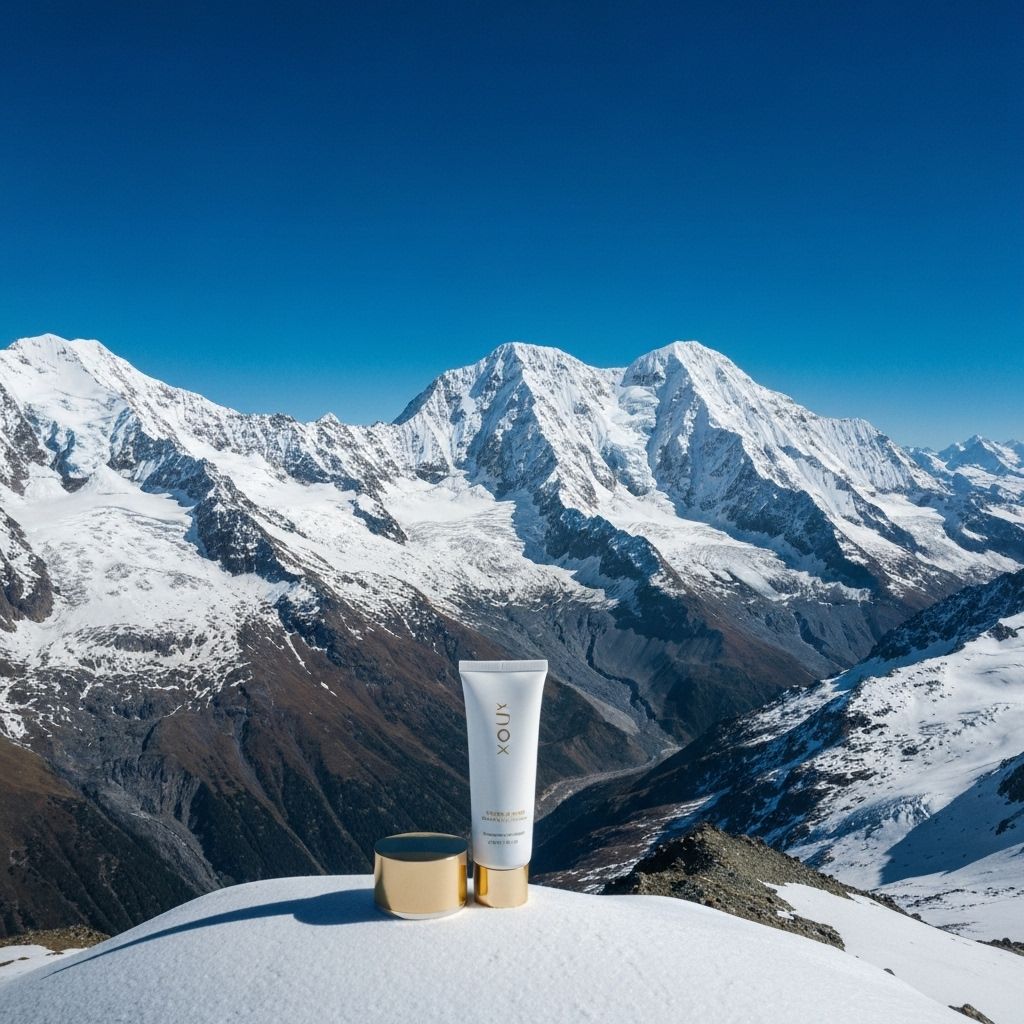The Science Behind High-Altitude Skincare

After years of mountaineering expeditions, we've learned that high-altitude environments pose unique challenges to skin health. Here's what happens to your skin above 10,000 feet and why specialized skincare matters.
The High-Altitude Challenge
At high altitudes, your skin faces a perfect storm of environmental stressors. UV radiation increases by 10-12% for every 1,000 meters of elevation gain. The air becomes significantly drier, with humidity levels often dropping below 20%. Wind speeds are higher and more persistent, accelerating moisture loss from the skin's surface.
"At 20,000 feet, UV radiation is 60% stronger than at sea level. Your skin doesn't stand a chance without proper protection."
These conditions create what dermatologists call "altitude-induced xerosis" – severe skin dryness that can lead to cracking, inflammation, and increased susceptibility to environmental damage. Traditional moisturizers, designed for sea-level conditions, simply can't provide adequate protection.

Why Regular Moisturizers Fail
Most commercial moisturizers are formulated with water as the primary ingredient. At high altitudes, this water evaporates rapidly, leaving your skin even drier than before. Additionally, standard SPF formulations don't account for the dramatically increased UV exposure at elevation.
We discovered this firsthand during our expeditions. Despite using premium skincare products, we consistently experienced severe chapping, sunburn, and skin damage. It became clear that we needed a fundamentally different approach.
The Ri Skincare Solution
Our Mountain Moisturizer uses a unique anhydrous base – meaning it contains minimal water. Instead, we rely on plant-derived squalane, which mimics your skin's natural oils and doesn't evaporate in low humidity. This creates a protective barrier that locks in moisture while allowing your skin to breathe.

We've incorporated SPF 30 broad-spectrum protection specifically calibrated for high-altitude UV exposure. The formula includes zinc oxide and titanium dioxide, which provide physical sun protection without the chemical irritants found in many sunscreens.
Key Ingredients and Their Benefits
Squalane
This plant-derived oil is nearly identical to your skin's natural sebum. It provides deep hydration without feeling greasy and remains stable in extreme temperatures.
D-Panthenol (Vitamin B5)
Penetrates deep into the skin to improve moisture retention and accelerate healing of damaged skin barriers. Essential for recovery from altitude-induced stress.
Sea Buckthorn Oil
Rich in omega-7 fatty acids and vitamins A, C, and E. Provides antioxidant protection against free radical damage from increased UV exposure.
Real-World Testing
We've tested our formula on expeditions ranging from the Himalayas to the Andes, in conditions from -20°C to 30°C. The results have been consistent: significantly reduced skin damage, maintained hydration levels, and protection against both UV radiation and environmental stress.
But here's what surprised us most: the same formula that protects skin at 20,000 feet works beautifully for everyday use. Whether you're commuting in polluted city air, spending time in air-conditioned offices, or just dealing with seasonal dryness, the science that works at altitude translates perfectly to sea level.
The Bottom Line
High-altitude skincare isn't just about surviving extreme conditions – it's about understanding what skin truly needs to thrive in challenging environments. By addressing the fundamental issues of moisture retention, UV protection, and barrier repair, we've created a product that works wherever your adventures take you.
Whether you're planning your next expedition or simply want the best protection for your daily routine, understanding the science behind altitude skincare can help you make informed choices about what you put on your skin.

Ajinkya & Abhinav
Co-founders of Ri Skincare and experienced mountaineers. We've spent years testing skincare solutions in the world's most extreme environments, from the Himalayas to the Andes.